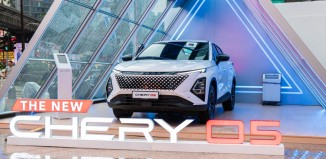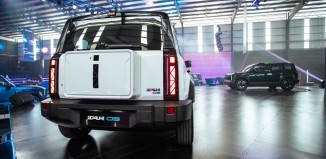Making Motoring Safer
Making vehicles safer not just for the occupants but also other road-users is among the top priorities for all carmakers. But how much money a company can devote to R&D in this area depends on how big it is and how much profit it makes. At Ford, a significant budget is allocated for research to develop leading safety and security technologies.
“Ford Motor Company is working on new ways to address the most threatening driving conditions and situations,” said Helen Petrauskas, the company’s vice-president for environmental and safety engineering. “Active safety systems currently under development represent a key opportunity to help drivers of all vehicles to avoid accidents.”
Volvo, being the industry’s acknowledged leader in safety and a division in Ford, has the lead role and is designated the Ford Centre of Excellence for Safety. Working with other divisions in the Ford family, Volvo will bring innovation to the science of protecting vehicle occupants. But it is not only Volvos that will feature the latest and most advanced safety technology as the developments will be shared in the Ford group of companies.
A glimpse of some of these technologies was provided by Ford as part of its ‘Deep Dive’ media event in Dearborn, Michigan, USA, which AUTOWORLD.COM.MY’s Chips Yap also participated in. At the presentation on the future safety technologies, Ms Petrauskas explained that the R&D was in accordance with the ‘Cleaner, Safer, Sooner’ initiative which Ford announced in January 1999. This initiative aims to bring to the majority of Ford’s customers the best safety and environmental technology.
“We want to give consumers good things in good time, using Ford’s vast resources and those of our suppliers to apply safety technology across the brands as soon as possible. It is our intention to offer safety features over and above what laws require,” she said.
What’s in store?
* A system which ensures that the seating position of any driver is ideal and has maximum all-round visibility. It uses sensors to determine the driver’s eye height and then all relevant elements – steering wheel, seat, pedals and even the floor height – are automatically adjusted. The work is being done by a Volvo team using a concept vehicle called the ‘EyeCar’.
* In the CamCar, the blind spot may be gone forever as cameras around the body provide the driver with an unprecedented view all round. There’s also a special camera which can give detailed images, even in near-darkness.
* Sensor technology will become more commonplace to detect pedestrians crossing the road at night and also to provide warning of an imminent rear-end collision. In the SensorCar project being undertaken by Mazda, there is also a system which will automatically tighten the seatbelts if a rear-end impact is likely to occur.
* While protecting a vehicle’s occupants is important, Ford is not forgetting that other road-users also need protection in an accident. In fact, the European Union (EU) is thinking of making it mandatory for carmakers to offer some sort of pedestrian protection in their designs. Ford’s proposal is to install airbags in the bumper and bonnet for pedestrians. The prototype uses a Ford Explorer and is known as the Pedestrian Safety Car.
* Every minute’s delay in getting to a crash could make a difference between life and death for the vehicle’s occupants. Ford’s RescueCar is equipped with various features to automatically notify rescue teams the moment the vehicle has an accident and to send important information on its location, occupants and even an image of the cabin area.
* Owners who are forgetful enough to leave their kids in cars will now have no worries because Volvo researchers are working on a heartbeat sensor-equipped car which will detect signs of life in a car. The SecureCar also has a CO2 sensor in the boot which will automatically unlock the bootlid if someone is trapped inside for a while.
“These technologies we are working on are still in their infancy and there is no specific year when they will be offered to customers. Some elements may appear earlier and not all the features will come as a single package or there may be a combination,” noted Stefan Nilsson, Director of the Volvo Cars Safety Centre.
“But whatever new technologies we add must not conflict with the driver’s attention and we must also consider if drivers are ready to accept increased control of their cars by computers,” he added.
Click on the links to read more about future technologies in each of the prototypes.























